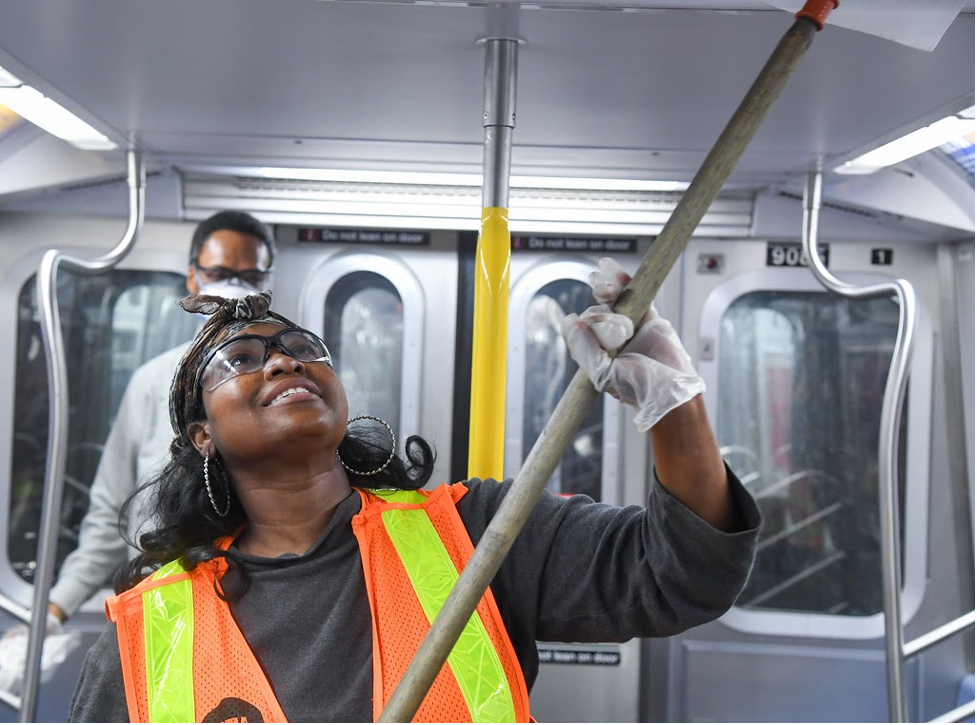
With the bipartisan infrastructure framework legislative text nearing a vote, unused transit COVID relief dollars have become a target for scrounging together enough money to pay for that deal’s cost. Our communities still need these funds—here’s why:
Most of the United States shut down last March 2020, as stay at home orders were enacted and many people were placed in remote work and school arrangements. However, our essential workers, including transit operators, continued to work on the frontlines. The CARES Act, Coronavirus Response and Relief Supplemental Appropriations (CRRSA) Act, and the American Rescue Plan provided vital funding to keep transit agencies and their communities moving. While overall ridership numbers drastically decreased, transit agencies continued to transport the essential workers who never stopped serving their communities every day through the pandemic. As our nation moves towards recovery, even amid growing concerns around the COVID-19 Delta variant, transit agencies will continue to need these funds to fully recover.
It will take a few years before transit ridership returns to pre-COVID levels. That is exactly why Congress allowed the American Rescue Plan’s transit relief funds to be available until 2024. While some agencies have fully exhausted all their relief funding, others have made plans to draw down those funds over time to avoid financial disaster. Taking this money away from transit agencies now, with so many political and public health unknowns, will put many of those agencies right back on the fiscal cliff Congress sought to avoid at the beginning of the year.
Here is what some transit agencies have spent their COVID money on:
- Moving our essential workers during nationwide stay at home orders
- Increased cleaning
- Using vehicles to administer COVID tests and vaccinations
- Provide PPE for operators and riders
- Implement capacity limits and increase frequency
Some transit agencies had the ability or need to fully utilize all of their COVID relief dollars while others have used different strategies to recover from stay at home orders. Why is that? Every transit agency’s financial flexibility is different. Many agencies pay for much of their operating costs through a combination of state and local taxes and fares. Many transit agencies moved to a fare free system in order to make drivers and operators safer by reducing interaction with riders. This decision to protect the public health of operators and riders had a strong impact on revenue. In addition, some parts of the country were hit harder than others by the economic downturn, greatly impacting the amount of taxes collected. Smaller agencies and larger agencies typically don’t depend on fare revenues to the same degree.
The labor market for transit agencies has also been severely impacted by the pandemic. The ability to train and hire new operators while implementing social distancing guidance has become a challenge while traditional retirements and attrition rates continue. If Congress were to pull these funds, it would put an even greater strain on transit agencies’ ability to recruit and retain operators and staff—right at the time when ridership is going to start picking up once again.
Investment in transit is investment in people, our communities, and our economy. COVID relief dollars have been and continue to be a lifeline to transit agencies that serve our communities and will drive economic growth through recovery. Yanking those relief dollars at this juncture would be pulling the rug out from under these agencies, driving their operations to ruin, deteriorating and cutting mobility for millions of Americans, and stymying the recovery of many communities reliant on public transit.
The post Senate takes aim at essential transit relief dollars to cover the cost of their infrastructure bill appeared first on Transportation For America.











